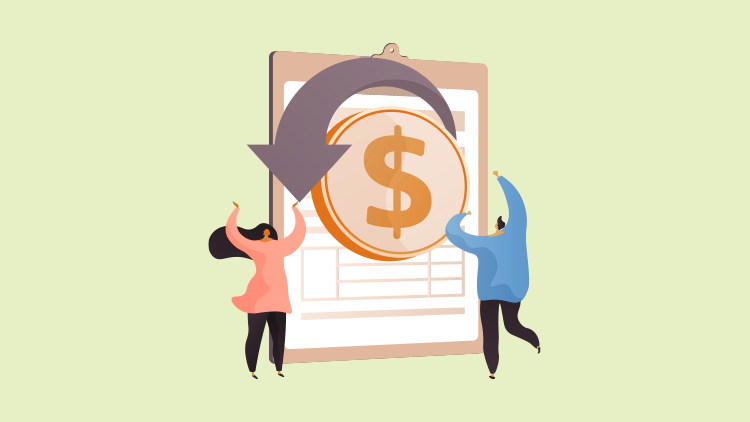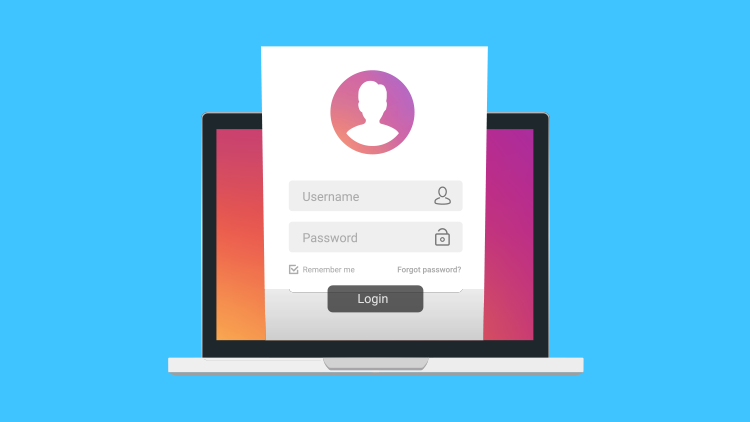by | Jul 31, 2021 | Tax Tips and News
Tax professionals are a frequent target for identity thieves and cybercriminals, who are interested in accessing client tax records and, in some cases, the software used to file tax returns. The second week of the Security Summit’s “Protect Your Clients; Protect Yourself” campaign focuses on helping taxpayers protect their return by highlighting the benefits of an IP PIN.
The biggest hurdle is getting taxpayers to understand why they need an IP PIN and how they apply for one. While tax pros can’t complete the registration process for their clients, they can explain the benefits and process.
What is an IP PIN?
The IRS lists six tips for anyone considering an IP PIN:
- It’s a six-digit number known only to the taxpayer and the IRS.
- The opt-in program is voluntary.
- The IP PIN should be entered onto the electronic tax return when prompted by the software product or onto a paper return next to the signature line.
- The IP PIN is valid for one calendar year; taxpayers must obtain a new IP PIN each year.
- Only dependents who can verify their identities may obtain an IP PIN.
- IP PIN users should never share their number with anyone but the IRS and their trusted tax preparation provider. The IRS will never call, email or text a request for the IP PIN.
For late or extension filers, there’s still time to get an IP PIN for this year’s return. That said, those who have already filed but want to protect next year’s return will be able to apply for a PIN this coming January. Luckily, the IP PIN registration process is relatively straightforward for most taxpayers.
How do taxpayers sign up for an IP PIN?
The IRS says that those with secure Internet access should first consider the Get an IP PIN tool on IRS.gov. Users will need to have some personal information at hand when registering:
- Email address
- Social Security Number (SSN) or Individual Tax Identification Number (ITIN)
- Tax filing status and mailing address
- One financial account number linked to your name:
- Credit card – last 8 digits (no American Express, debit or corporate cards) or
- Student loan – (Enter the student loan account number provided on your statement. The account number may contain both numbers and letters. Do not include any symbols.) Additionally, we can’t verify student loans issued by Nelnet. or
- Mortgage or home equity loan or
- Home equity line of credit (HELOC) or
- Auto loan
- Mobile phone linked to your name (for faster registration) or ability to receive an activation code by mail
Since this info is required to verify online users’ identity, the agency suggests checking out the IRS.gov page detailing the Secure Access process: “Secure Access: How to Register for Certain Online Self-Help Tools.” Those preferring an analogue approach who make up to $72,000 a year can always file Form 15227, Application for an Identity Protection Personal Identification Number.
Here are a few more IP PIN-related links that taxpayers may find helpful:
Source: IR-2021-158
– Story provided by TaxingSubjects.com
by | Jul 30, 2021 | Tax Tips and News
The Internal Revenue Service says it’s not done issuing refunds for tax paid on COVID unemployment benefits. Another 1.5 million taxpayers are now slated to get refunds averaging over $1,600 as part of the IRS adjustment process in the wake of recent legislation.
It all started with passage of the American Rescue Plan Act of 2021, also called ARP, that excluded up to $10,200 in 2020 unemployment compensation from taxable income.
The exclusion was limited to individuals and married couples with modified gross income less than $150,000.
Refunds by direct deposit started in late July; paper check refunds start in early August.
So far, the IRS has gone through four rounds of refunds due to the unemployment compensation exclusion. So far, the IRS has issued nearly 9 million unemployment compensation refunds, totaling more than $10 billion. More, the IRS says, are on the way.
The IRS gets ahead of the curve.
The IRS says its efforts are focused on helping lessen the burden on taxpayers. The net result is most taxpayers won’t have to take any additional action to get a refund.
Most taxpayers impacted by the change in the law won’t have to file an amended return because the IRS has already reviewed their return and automatically adjusted the tax return for them. If a taxpayer overpaid, the agency either refunds the overpayment, or applies it to other outstanding taxes or other federal or state debts that are owed.
In this fourth round of refunds, the IRS says it found some 1.7 million taxpayers deserved an adjustment. Roughly 1.5 million of them are expected to get a refund, which are averaging around $1,600.
Processing has been on a sliding scale; simple returns were processed first, and more complex returns followed. In this fourth round of processing—part of the “more-complex” category, refunds are higher, because an adjustment to the Advance Premium Tax Credit or APTC was also included in the calculation.
To amend or not to amend, that’s the question …
In the vast majority of cases, the IRS says there’s no reason for taxpayers take any action or call the IRS. That said, there may be instances where taxpayers become eligible for deductions or credits because of the newly excluded income, tax breaks they weren’t eligible for prior to the IRS review.
If that’s the case, the IRS says those taxpayers need to file a Form 1040-X, Amended U.S. Individual Income Tax Return in order to claim those additional benefits.
These taxpayers should file amended returns:
There are other cases where the IRS considers an amended return to be the best course of action. These include:
- Taxpayers who did not submit a Schedule 8812 with the original return to claim the Additional Child Tax Credit and are now eligible for the credit after the unemployment compensation exclusion;
- Taxpayers who did not submit a Schedule EIC with the original return to claim the Earned Income Tax Credit (with qualifying dependents) and are now eligible for the credit after the unemployment compensation exclusion; or
- Taxpayers who find they are now eligible for other credits or deductions not mentioned here. They should make sure to include any required forms or schedules.
These taxpayers don’t need to file amended returns:
Conversely, these taxpayers do not need to amend their return. They include:
- Taxpayers who already filed a tax return and didn’t claim the unemployment exclusion; the IRS will figure the correct taxable amount of unemployment compensation and tax;
- Taxpayers who have an adjustment because of the exclusion, that will result in an increase in any non-refundable or refundable credits reported on the original return;
- Taxpayers who didn’t claim the following credits on their tax return but are now eligible when the unemployment exclusion is applied: Recovery Rebate Credit, Earned Income Credit with no qualifying dependents or the Advance Premium Tax Credit. The IRS will calculate the credit and include it in any overpayment;
- Taxpayers who filed a married-filing-joint return, live in a community property state, and entered a smaller exclusion amount than entitled on Schedule 1, line 8.
After the IRS makes an adjustment in a taxpayer’s return, the taxpayer gets a letter informing them that the adjustment was made and what kind of adjustment was made – whether they got a refund, or the adjustment went to pay a debt to the IRS or a payment offset for some other kind of authorized debt.
These letters, generally sent out within 30 days of the adjustment, also confirm the amount of the adjustment.
Source: IR-2021-159
– Story provided by TaxingSubjects.com
by | Jul 29, 2021 | Tax Tips and News
With summer comes the prospect of a summer job for college students. Many times, their top priorities are twofold:
- Get some valuable work experience that can help them snag a choice position once they’ve graduated
- Make some spending money while they’re at it
It’s during this time these working students get to know one of the basic laws of the Real World: Not all the money they earn goes into their pockets because their employer has to withhold taxes from their paychecks.
Even with part-time or temporary jobs, there are some things the IRS wants taxpayers to keep in mind.
What tax issues should college students consider when working a summer job?
New Employees: Workers, including students working summer jobs, normally have income and other taxes withheld from their paychecks by their employers. New hires need to fill out a Form W-4, Employee’s Withholding Allowance Certificate, and send that to their employer.
The employer, in turn, uses the completed W-4 to figure just how much money should be withheld from the new employee’s pay. In the old days, the employee had to figure out just how much to withhold from paychecks to satisfy the tax man. Now, though, new hires can go online and use the Withholding Estimator on the IRS website.
Self-Employment: If summer work consists of baby-sitting, lawn care or gig economy work and the like, these jobs are generally considered to be self-employed work by the IRS.
Cash earned from self-employment is taxable, and students in this line of work will have to pay their taxes directly to the Internal Revenue Service. One of the best ways to do this is to make estimated tax payments during the year.
Tip Income: Students who wait tables or tend bar as part of their summer jobs should remember that tip income is taxable. They need to keep a daily log of the tips they receive so they can report them accurately. Cash tips have to be reported to their employer if they bring in $20 or more for the month.
Payroll Taxes: These taxes pay for Social Security benefits. Even though students working a summer job might not earn enough over the season to owe income tax, their employers nevertheless have to withhold Social Security and Medicare taxes from their pay. Those students who are considered self-employed are generally responsible for paying Social Security and Medicare taxes directly.
Reserve Officers’ Training Corps Pay: Students in ROTC may be taxed on certain activities connected to their training. For example, if students are paid for things such as summer advanced camp, it is taxable. However, other perks the student receives, such as food and lodging, may not be taxed. See the Armed Forces Tax Guide on IRS.gov for more details.
For more information on summer jobs and taxes, check out Tax Rules for Students; Is My Tip Income Taxable?; and Do I Have Income Subject to Self-Employment Tax?
Source: IRS Tax Tip 2021-108
– Story provided by TaxingSubjects.com
by | Jul 27, 2021 | Tax Tips and News
Live long enough, and we all come to realize there are still a few universal truths:
- Everybody likes to save a little time.
- Everybody likes options.
- Everybody likes things to be easy.
When it comes to dealing with yearly income taxes, the Internal Revenue Service thinks its new IRS online account can give taxpayers a little more on all three fronts. The agency says this online account is a safe and—yes—easy way for taxpayers to keep up with some of the details of their federal income taxes.
What can taxpayers see on their IRS online account?
The IRS says that taxpayers can see the following information on their IRS online account:
- Their payoff amount, which is updated for the current day.
- The balance for each tax year for which they owe taxes.
- Their payment history.
- Key information from the their most current tax return as originally filed.
- Payment plan details if they have one.
- Digital copies of select IRS notices.
- Economic Impact Payments if they received any.
- Their address on file.
What can taxpayers do on their IRS online account?
The IRS says taxpayers can take the following actions using their IRS online account:
- Select an electronic payment option.
- Set up an online payment agreement.
- Go directly to Get Transcript.
One of the other new features in the Online Account is the ability for taxpayers to designate who can represent them before the IRS or to view their tax records. Users can also approve Power of Attorney and Tax Information Authorization requests from their tax professional—and to sign the documents digitally.
All these features can go a long way to helping out with that “saving time” thing.
The IRS reminds there are a few details to remember when using the Online Account feature. A taxpayer’s balance will update only once over a 24-hour period; usually, this happens overnight.
In addition, taxpayers should allow 1-3 weeks for payments to show up in their payment history.
Registration through Secure Access is required before access to the Online Account is granted. This two-factor authentication process helps ensure that users’ personal information remains secure.
Taxpayers can review the Secure Access process online before starting registration.
Source: IRS Tax Tip 2021-107
– Story provided by TaxingSubjects.com
by | Jul 24, 2021 | Tax Tips and News
Let’s face it: higher education is expensive, whether it’s community college, a trade school, a four-year university or an advanced degree. That’s where higher education tax credits come in.
Credits reduce the amount of tax owed by qualified taxpayers. Some credits are refundable, that is, if a refundable credit reduces tax owed to less than zero, the taxpayer could get a refund.
And higher education credits can apply to more than just the taxpayer who files. Anyone listed on the return as a dependent—be it a spouse or a child or other dependent—could be eligible if they qualify.
At present there are two credits for higher education expenses and they each cover a different sort of educational scenario.
American Opportunity Tax Credit
This credit aims for the student starting out on their higher-education journey. Some of the main features of the American opportunity tax credit include:
- The credit is for those students pursuing a degree or some other recognized education credential.
- The credit only covers the first four years of education at an eligible college or vocational school.
- Taxpayers can receive up to $2,500 per qualifying student.
- The credit is partially refundable, with eligible students potentially getting up to $1,000 back.
Lifetime Learning Credit
In contrast to the American opportunity tax credit, the lifetime learning credit helps those who have had to “go slow” with their education, stringing their classes out over an extended period—or those students who have to take courses in order to remain employed. Major features of the lifetime learning credit include:
- No matter how many dependents on a single tax return qualify for this credit, the maximum benefit is capped at $2,000 per tax return.
- The credit is available for all years of postsecondary education and for classes to acquire or improve job skills. This includes courses to maintain certification in order to remain employed.
- The credit covers courses no matter when they were taken; it is available for an unlimited number of tax years.
When it comes to claiming either of these credits, the starting place is the institution where the classes are taken. The school has to be an eligible educational education and it must send the student a Form 1098-T.
The IRS cautions, however, that there are some exceptions for some students.
To claim either credit, taxpayers should file Form 8863, Education Credits, in their income tax return.
For more information on these two education credits, see Compare Education Credits, and Publication 970, Tax Benefits for Education on IRS.gov. Use the Interactive Tax Assistant to see if a taxpayer is eligible for these credits.
Source: Here’s what taxpayers need to know about higher education tax credits
– Story provided by TaxingSubjects.com





